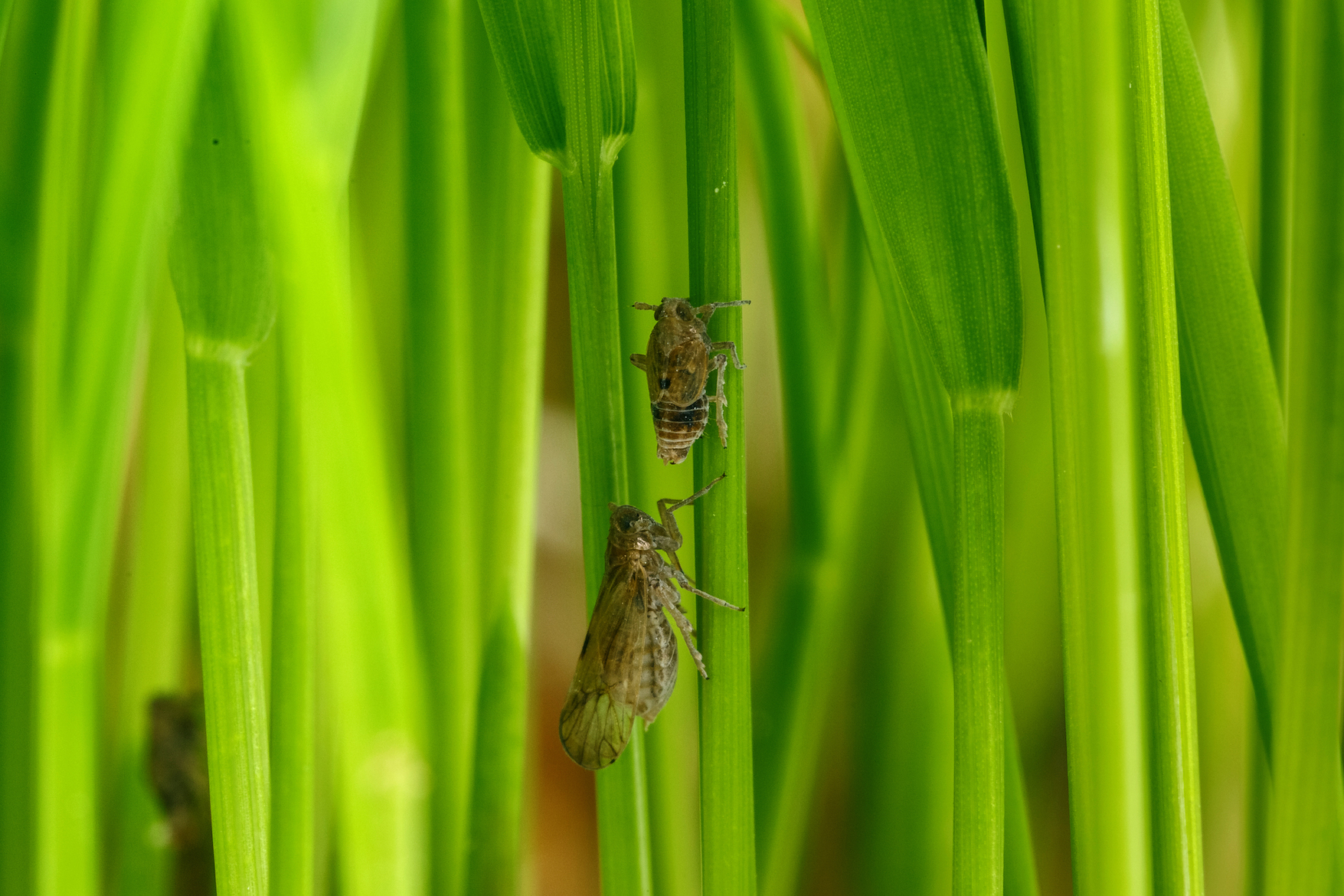
Destructive insects grow wings after cues from their host plant
A new study led by Washington State University (WSU) has identified the underlying mechanism that drives short or long wing development in the brown planthopper, one of the most destructive rice pests in the world. The experts have discovered that the quality of the host plant is responsible for wing growth and migratory behavior among these insects.
According to WSU Professor Laura Lavine, wing size determines whether the planthoppers feed locally or migrate over long distances to reach new rice plants.
“It’s all about the amount of glucose, or sugar, in the plant,” said Lavine. “Rice plants with higher glucose levels are older and dying. That increase in glucose causes adolescent brown planthoppers to develop into the long-winged adults. The plant really is telling the insect how to grow.”
There is a shift in the ratio of sugars to amino acids over the course of a rice plant’s life. Young rice plants are ideal for feeding insects because they have relatively low glucose levels and provide plenty of nutrition. With no need to seek out additional food sources, the brown planthoppers grow short wings and the females grow large ovaries.
On the other hand, planthoppers that feed on aging plants are exposed to rising levels of glucose. They must prepare to migrate, developing long wings and smaller ovaries.
“It’s a one-time decision,” said Lavine. “If the decision to stay and reproduce or migrate and fly away is incorrect, the brown planthopper is in trouble. Grow short wings when long wings are needed to move away and they die. Grow long wings when they could manage with short wings and they’re leaving a healthy food source and have to needlessly search for another home.”
Levine explained that the insects cannot change their body structure once they reach adulthood. The researchers hope that the findings of this study will lead to the development of a technique to manipulate planthoppers to grow long wings.
“The results of this study will hopefully allow scientists a new way to figure out how to trick the brown planthopper into developing into the wrong form so that they die before they become pests,” said Lavine.
The researchers were surprised to find that glucose was the sole factor driving wing growth among brown planthoppers.
“It has been difficult to isolate environmental signals that influence insect morphology and behavior,” said Lavine. “But it’s not for the brown planthopper. The plant’s glucose level is the signal on whether they stay or go.”
The study is published in the Proceedings of the National Academy of Sciences.
—
By Chrissy Sexton, Earth.com Staff Writer
Image Credit: Xinda Lin, Jiliang University













